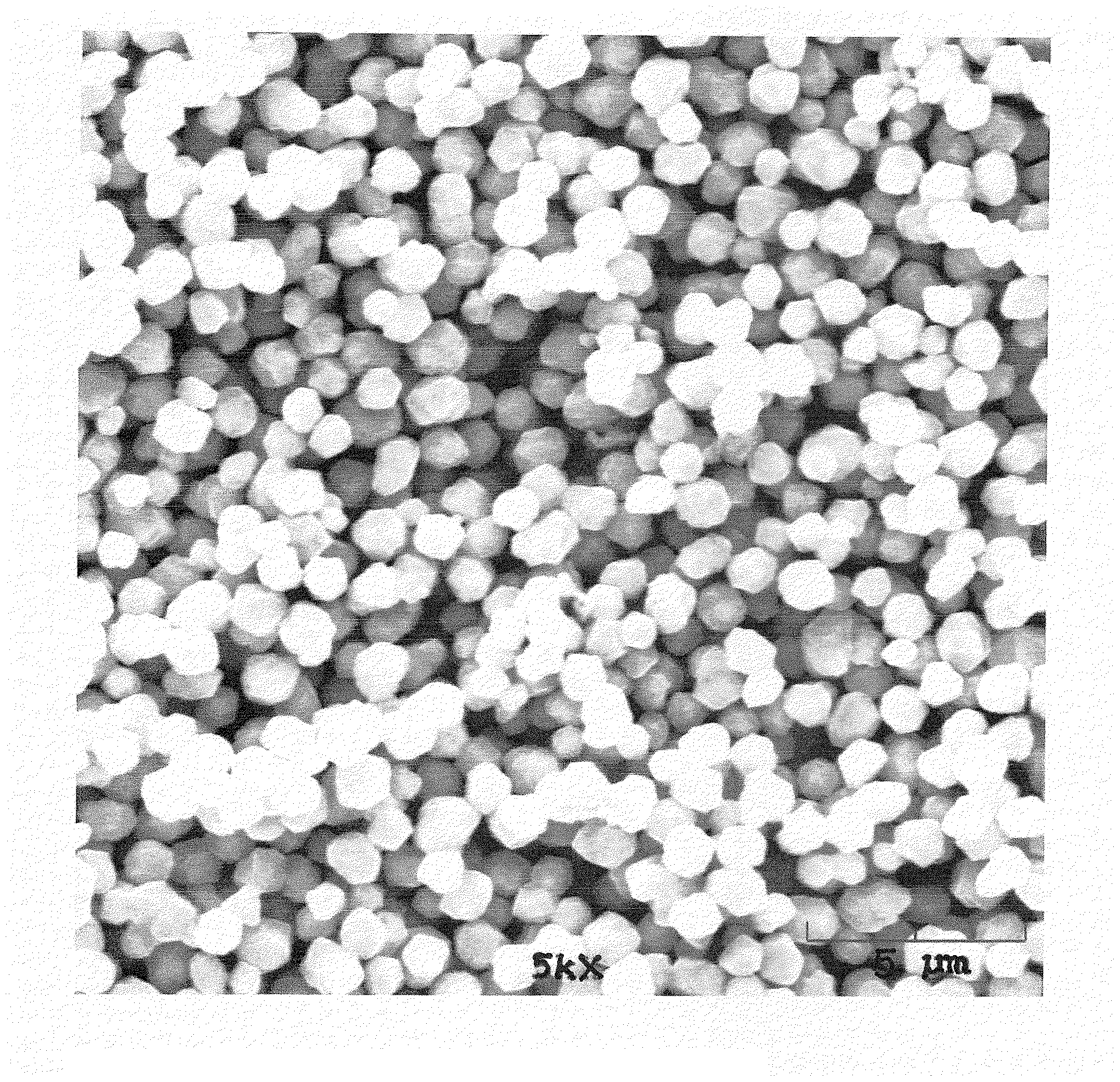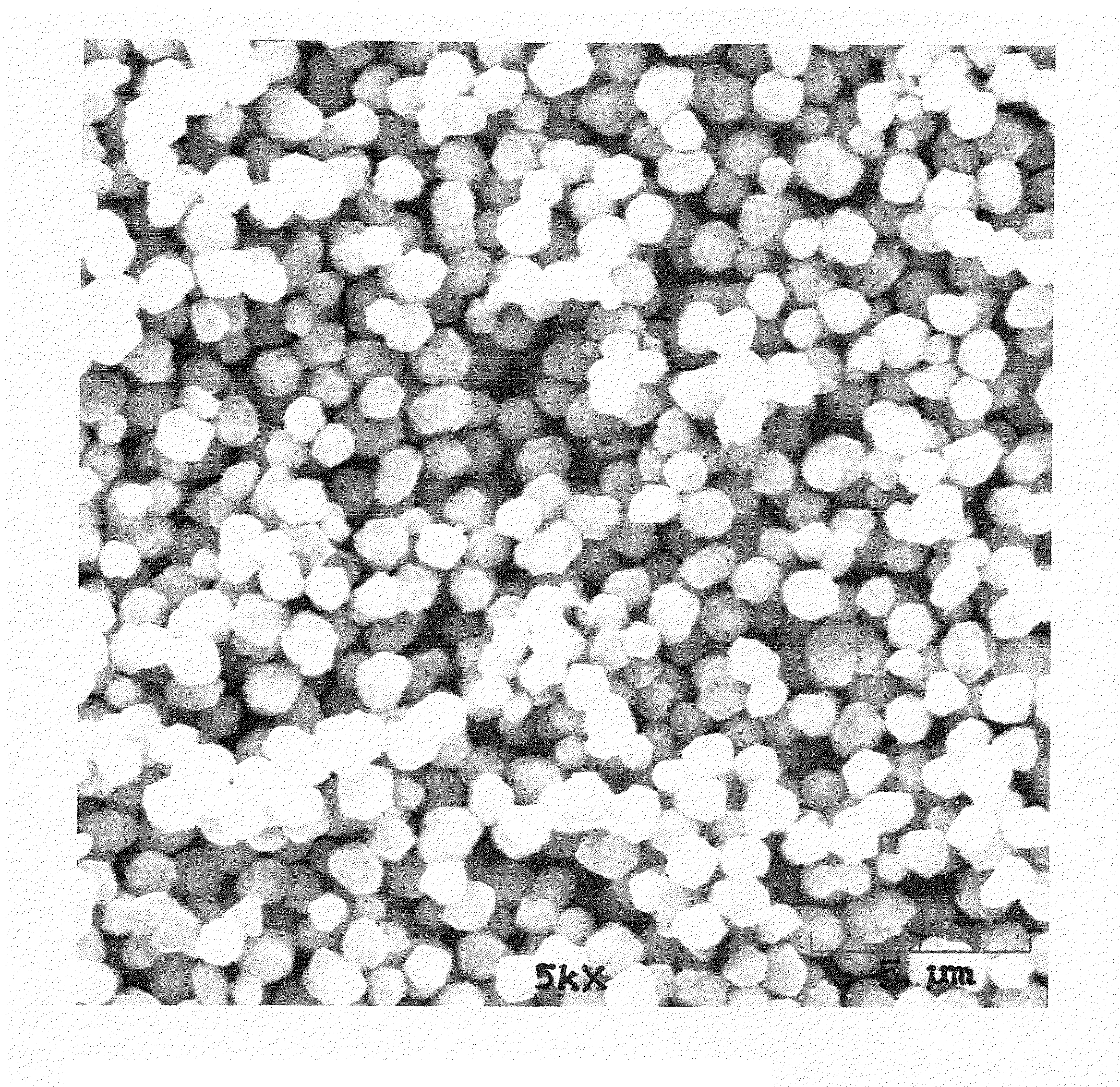Copper alloy particle synthesis
a technology of copper alloy and particle synthesis, which is applied in the field of process for synthesis of copper alloy particle, can solve the problems of lack of uniform grain size, large range of particle size distribution, and large size of allotted space, and achieves tighter particle size distribution, better reproducibility, and small particle size distribution range
- Summary
- Abstract
- Description
- Claims
- Application Information
AI Technical Summary
Benefits of technology
Problems solved by technology
Method used
Image
Examples
example 1
[0088]Copper-Nickel Particle Synthesis
[0089]In one of the preferred embodiments of the present invention, 14,730 grams of propylene glycol and 350 grams of pentaerythritol is loaded into a 22 liter flask reactor. The reactor has an agitator. The agitator is spinning at 350 rpms. The reactor heat setting is set to high. After the reaction mixture reaches 60° C., 5,500 grams of copper carbonate is loaded into the reactor along with 500 grams of nickel carbonate.
[0090]The reactor is allowed to continue heating until the reactants reach approximately 170° C. While not intending to be bound by theory, it is thought that at this temperature the copper carbonate will reduce to copper metal spheres and then nickel carbonate will reduce on the surface. Again, without intending to be bound by theory, it is thought that the resulting reactants will cause a decrease in temperature due to evaporation of propylene glycol and reactant bi-products.
[0091]The reactor continues to heat to 180° C. Once...
example 2
Copper Particle Synthesis
[0097]In another preferred embodiment of the present invention, 14,730 grams of propylene glycol and 350 grams of pentaerythritol is loaded into a 22 liter flask reactor. The reactor has an agitator. The agitator is spinning at 350 rpms. The reactor heat setting is set to high. After the reaction mixture reaches 60° C., 5,500 grams of copper carbonite is loaded into the reactor.
[0098]The reactor is allowed to continue heating until the reactants reach approximately 170° C. While not intending to be bound by theory, it is thought that at this temperature the copper carbonate will reduce to copper metal spheres. Again, without intending to be bound by theory, it is thought that the resulting reactants will cause a decrease in temperature due to evaporation of propylene glycol and reactant bi-products.
[0099]The reactor continues to heat to 180° C. Once this temperature is reached, the reactor is allowed to cool down to 150° C. Once the reactor temperature reach...
PUM
| Property | Measurement | Unit |
|---|---|---|
| temperature | aaaaa | aaaaa |
| wt % | aaaaa | aaaaa |
| wt % | aaaaa | aaaaa |
Abstract
Description
Claims
Application Information
 Login to View More
Login to View More - R&D
- Intellectual Property
- Life Sciences
- Materials
- Tech Scout
- Unparalleled Data Quality
- Higher Quality Content
- 60% Fewer Hallucinations
Browse by: Latest US Patents, China's latest patents, Technical Efficacy Thesaurus, Application Domain, Technology Topic, Popular Technical Reports.
© 2025 PatSnap. All rights reserved.Legal|Privacy policy|Modern Slavery Act Transparency Statement|Sitemap|About US| Contact US: help@patsnap.com


